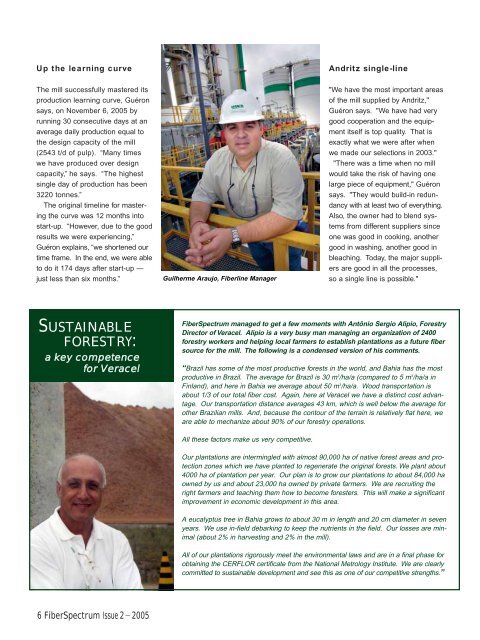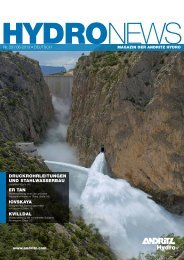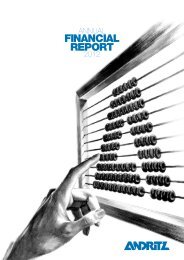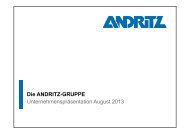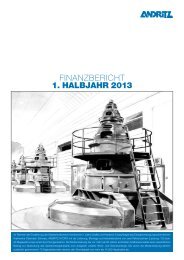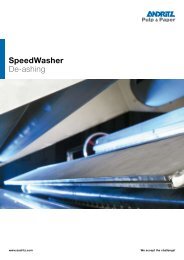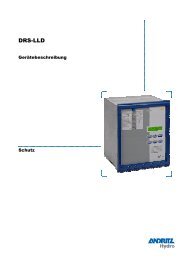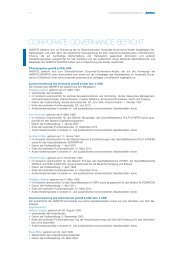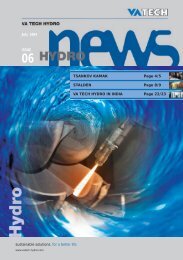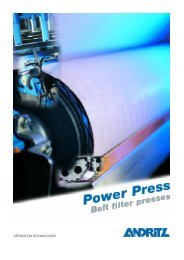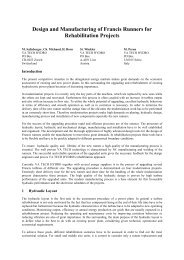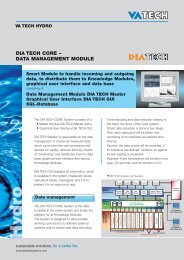The customer magazine of Andritz Pulp & Paper Issue 2 — 2005
The customer magazine of Andritz Pulp & Paper Issue 2 — 2005
The customer magazine of Andritz Pulp & Paper Issue 2 — 2005
Create successful ePaper yourself
Turn your PDF publications into a flip-book with our unique Google optimized e-Paper software.
Up the learning curve<br />
<strong>The</strong> mill successfully mastered its<br />
production learning curve, Guéron<br />
says, on November 6, <strong>2005</strong> by<br />
running 30 consecutive days at an<br />
average daily production equal to<br />
the design capacity <strong>of</strong> the mill<br />
(2543 t/d <strong>of</strong> pulp). “Many times<br />
we have produced over design<br />
capacity,” he says. “<strong>The</strong> highest<br />
single day <strong>of</strong> production has been<br />
3220 tonnes.”<br />
<strong>The</strong> original timeline for mastering<br />
the curve was 12 months into<br />
start-up. “However, due to the good<br />
results we were experiencing,”<br />
Guéron explains, “we shortened our<br />
time frame. In the end, we were able<br />
to do it 174 days after start-up <strong>—</strong><br />
just less than six months.”<br />
SUSTAINABLE<br />
FORESTRY:<br />
a key competence<br />
for Veracel<br />
6 FiberSpectrum <strong>Issue</strong> 2 <strong>—</strong> <strong>2005</strong><br />
Guilherme Araujo, Fiberline Manager<br />
<strong>Andritz</strong> single-line<br />
"We have the most important areas<br />
<strong>of</strong> the mill supplied by <strong>Andritz</strong>,"<br />
Guéron says. "We have had very<br />
good cooperation and the equipment<br />
itself is top quality. That is<br />
exactly what we were after when<br />
we made our selections in 2003."<br />
"<strong>The</strong>re was a time when no mill<br />
would take the risk <strong>of</strong> having one<br />
large piece <strong>of</strong> equipment," Guéron<br />
says. "<strong>The</strong>y would build-in redundancy<br />
with at least two <strong>of</strong> everything.<br />
Also, the owner had to blend systems<br />
from different suppliers since<br />
one was good in cooking, another<br />
good in washing, another good in<br />
bleaching. Today, the major suppliers<br />
are good in all the processes,<br />
so a single line is possible."<br />
FiberSpectrum managed to get a few moments with Antônio Sergio Alipio, Forestry<br />
Director <strong>of</strong> Veracel. Alipio is a very busy man managing an organization <strong>of</strong> 2400<br />
forestry workers and helping local farmers to establish plantations as a future fiber<br />
source for the mill. <strong>The</strong> following is a condensed version <strong>of</strong> his comments.<br />
“Brazil has some <strong>of</strong> the most productive forests in the world, and Bahia has the most<br />
productive in Brazil. <strong>The</strong> average for Brazil is 30 m 3 /ha/a (compared to 5 m 3 /ha/a in<br />
Finland), and here in Bahia we average about 50 m 3 /ha/a. Wood transportation is<br />
about 1/3 <strong>of</strong> our total fiber cost. Again, here at Veracel we have a distinct cost advantage.<br />
Our transportation distance averages 43 km, which is well below the average for<br />
other Brazilian mills. And, because the contour <strong>of</strong> the terrain is relatively flat here, we<br />
are able to mechanize about 90% <strong>of</strong> our forestry operations.<br />
All these factors make us very competitive.<br />
Our plantations are intermingled with almost 90,000 ha <strong>of</strong> native forest areas and protection<br />
zones which we have planted to regenerate the original forests. We plant about<br />
4000 ha <strong>of</strong> plantation per year. Our plan is to grow our plantations to about 84,000 ha<br />
owned by us and about 23,000 ha owned by private farmers. We are recruiting the<br />
right farmers and teaching them how to become foresters. This will make a significant<br />
improvement in economic development in this area.<br />
A eucalyptus tree in Bahia grows to about 30 m in length and 20 cm diameter in seven<br />
years. We use in-field debarking to keep the nutrients in the field. Our losses are minimal<br />
(about 2% in harvesting and 2% in the mill).<br />
All <strong>of</strong> our plantations rigorously meet the environmental laws and are in a final phase for<br />
obtaining the CERFLOR certificate from the National Metrology Institute. We are clearly<br />
committed to sustainable development and see this as one <strong>of</strong> our competitive strengths.”


